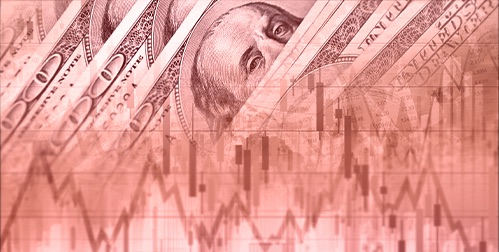Dropping Incomes, Massive Layoffs, Increasing Debt
Investors should be concerned by economic data that hasn’t been seen since the Great Depression. In a period of record inflation and soaring interest rates, disposable income has taken a massive drop. At the same time, a wave of white-collar layoffs is rumbling through the economy. The signs point to an unhealthy economic future that will impact short- and long-term financial planning.
The Biden administration is touting the strength of the economy. They point to a growing GDP. The problem is they are cherry picking their data. GDP appeared to improve by an increase in inventory. But this can be interpreted as people simply not buying much anymore as money becomes tight.
There has been a dramatic drop in real disposable income. It fell over $1 trillion in 2022. For context, this is the second-largest percentage drop in real disposable income ever. The first was in 1932 during the worst year of the Great Depression. Overall savings plummeted $1.6 trillion last year, falling below 2009 levels.1
As a result, consumer spending is slowing. The average family has lost about $6,000 in annual purchasing power under Biden. This happened because prices have risen so much faster than wages. Higher interest rates have increased annual borrowing costs by $1,400. The average family effectively has $7,400 less in their annual budget.2
And now, the Federal Reserve is going to issue another rate hike. This one might not be as large as previous increases, but it is an increase, nonetheless. The cost of credit cards, mortgages, and auto loans will rise. The average credit card rate is now 19.9%, an all-time high. “Credit card balances are rising at the same time credit card rates are at record highs; that’s a bad combination,” said Greg McBride, chief financial analyst at Bankrate.com.3
Residential investment fell off a cliff. It dropped 26.7%. Consumers could not afford the combination of high home prices, high interest rates and falling real incomes. Homeownership affordability has fallen to the lowest level in that metric’s history. And new car loan rates have doubled in the past year.
Banks are now preparing for massive defaults. Capital One Financial set aside roughly $1 billion to cover potential loan losses. Credit card debt is up as is delinquency, back to pre-pandemic levels.4
The White-Collar Recession
A tsunami of white-collar layoffs is crashing as people are running out of money. More than 1,600 tech workers are being laid off a day on average in 2023. Ninety-one tech companies have laid off 24,151 employees this year so far. Tech companies were hit hard by increased interest rates. The hikes made borrowing money more expensive. Inflation and decreased demand for pandemic-era services added to their losses.5
Meta let go of 11,000 employees in November, representing the largest workforce change for any company in 2022. Amazon let go of 10,000 employees, representing 3% of the company’s workforce. Booking.com let go of 25% of its workforce, which equals 4,375 employees. And after Elon Musk took control of the company, Twitter laid off 50% of its workforce.6
History doesn’t repeat, but it does rhyme. When the Federal Reserve blamed inflation on rising wages, they typically meant service industry jobs. Interest rate hikes were meant to increase unemployment and, in turn, lower inflation. But a white-collar recession with stubborn inflation indicates a much deeper problem with the economy. Soon, we may be facing an entire nation deep in personal debt with no way to get out. Stock volatility could drastically increase as the markets struggle to find a new floor. The door to a new Depression is opening wider.
Investors looking to protect themselves from this economic downward spiral should seek out safe haven assets. Precious metals have the capacity to protect wealth against harsh economic cycles. Contact us today to learn how a Gold IRA can shield your nest egg.






